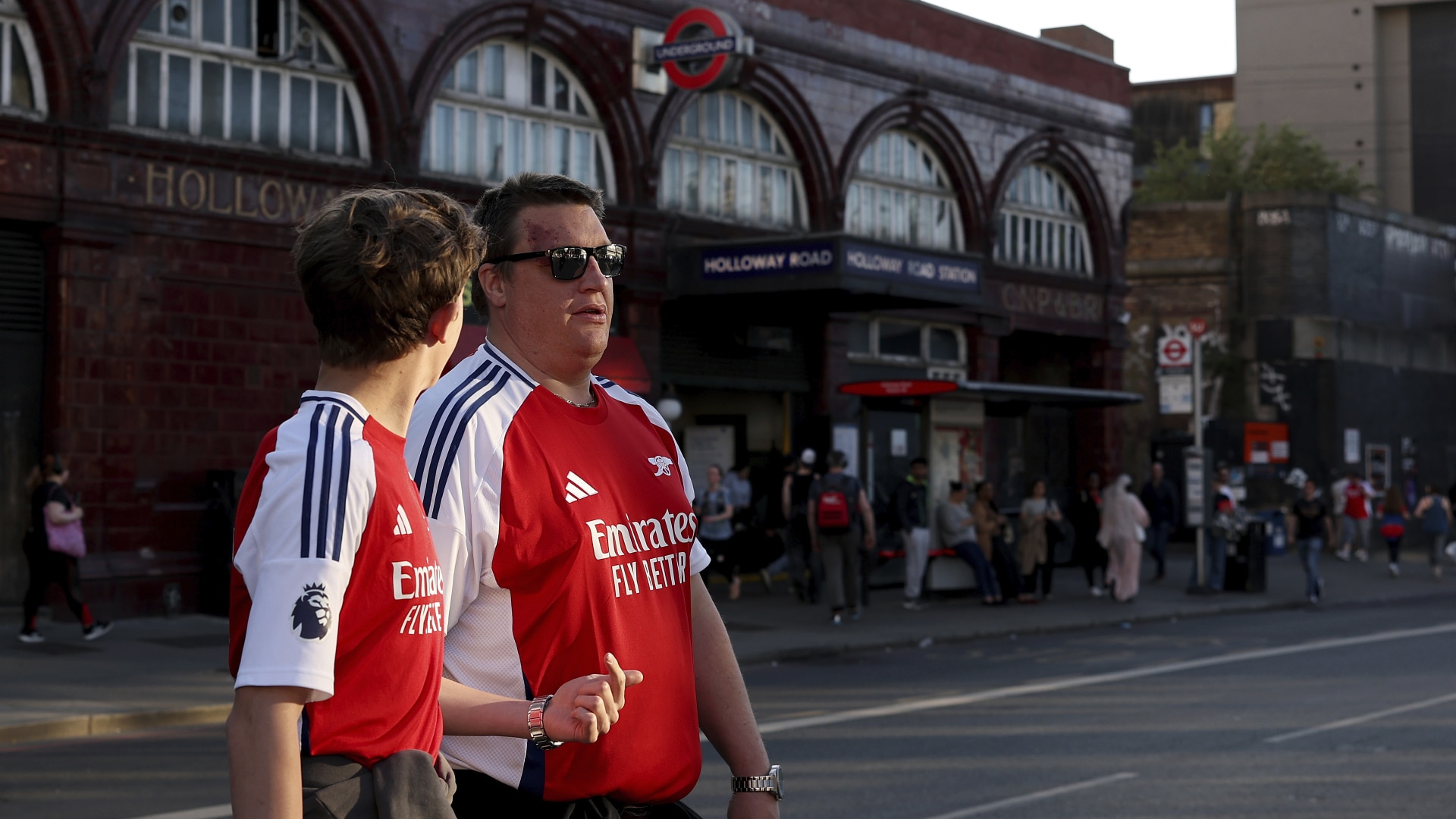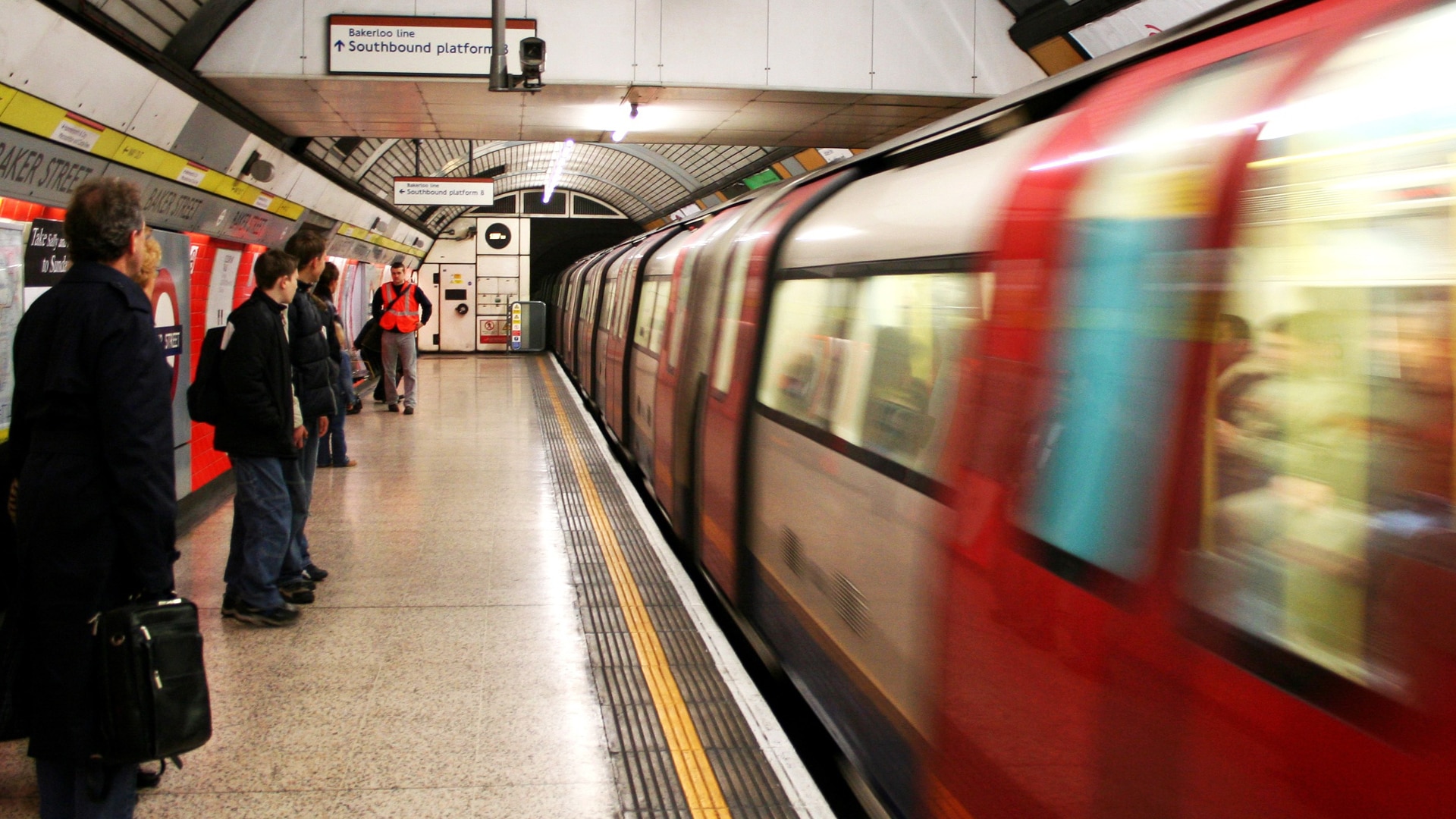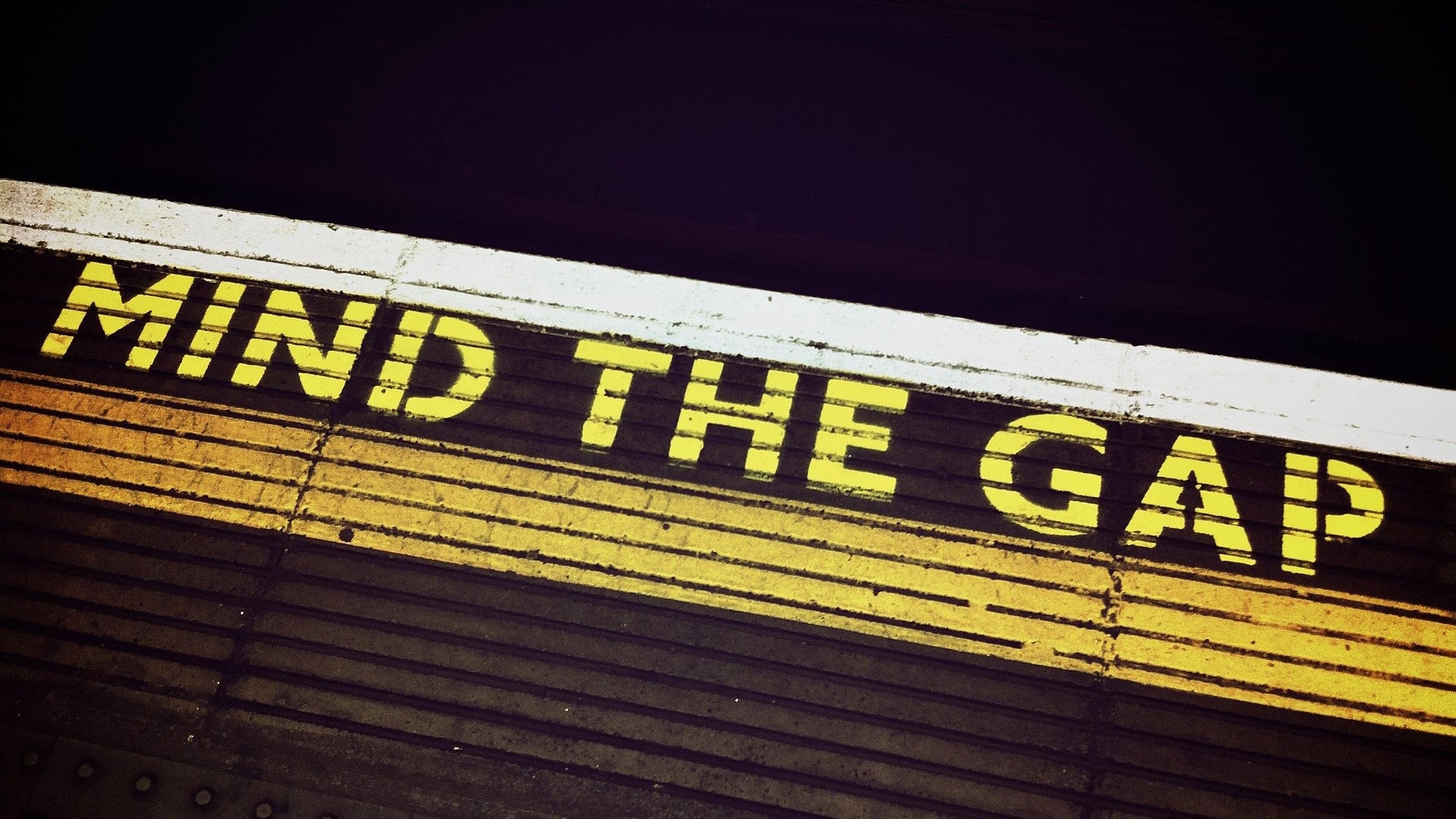Hello and welcome to the Premier Skills English podcast. This series of Football English podcasts are based around the needs of football players and football fans and will present language you need to play the game, language you need to watch the game on TV and online and language you need to travel to the UK to see a match at a Premier League stadium.
Today, I am focusing on English for football fans that travel to the UK to watch a match. I want to focus on language you can use to get around London, specifically, I want to talk about language related to travelling on the London Underground.
I have a roleplay for you to listen to in a little while, but first I want to talk about the London Underground more generally.
The London Underground
The London Underground is the world’s oldest underground railway. It opened 162 years ago on the 10th January 1863. It’s so old that it appeared in the original Sherlock Holmes stories. In London, most people refer to the London Underground as the Underground or the Tube. This nickname comes from the tubular, tube shaped tunnels that the trains travel through. Today, there are 11 lines and over 270 stations and each day something close to 5m people travel around the capital on the Tube. The Tube Map was designed by Harry Beck in the 1930s. The map is useful for working out how to travel around underground, but it is not to scale overground and can be confusing. Each of the lines is marked on the map in a different colour. When you’re travelling on the underground, the signs in the underground stations include the colour of the line from the map so they are easy to follow. However. when you’re travelling on the Tube, you need to know what direction your destination. When you’re looking for the right platform, you will see signs for your line, for example the Victoria Line or the Piccadilly Line, but at each station, the lines run in two directions. So if you’re travelling on the Piccadilly Line, which runs from north to south, you need to know if your station is north or south of you. At the station, there are different platforms for the northbound trains and the southbound trains. If you’re travelling on the Central Line, which runs from east to west, you’ll need to know if your train will be on the eastbound platform or the westbound platform. Finally, when you’re on the platform and waiting for the train to arrive, you’ll have to listen to the announcements. Sometimes, especially on the older lines, there’s a space between the platform and the train. If you’re waiting at one of these stations, you’ll hear the announcement: “Mind the gap” which means be careful of the space between the station and the train and take a big step so you don’t get your foot caught.
Roleplay
Now, I want you to listen to a roleplay. The roleplay is a conversation in a hotel. In the roleplay, I am a fan visiting London to watch a football match and I am asking for some advice about where I can buy a football shirt before the match.
When you listen to the role play, I’d like you to try to answer the following question:
Why do I think the receptionist is making fun of me?
At the hotel
Receptionist: Good morning, sir.
Tourist: Morning. I was hoping you could help me.
Receptionist: Of course, sir. I will do my best.
Tourist: Good. I’m looking for somewhere to buy an Arsenal shirt. I’ve got tickets for the match tomorrow and I’d like to get a shirt first.
Receptionist: Ah, I see. Let me just check with my colleague. Sam? Is the sports shop on St Mary’s Axe still open?
Sam: The one by the Gherkin?
Receptionist: Yes. The one with all the football shirts.
Sam: I don’t think so. I think they moved.
Receptionist: Do you know where to?
Sam: I think they moved to Crutched Friars.
Receptionist: Really? That’s quite far.
Sam: There’s the shop on Queen Street in Holborn. Would that be better?
Receptionist: Yes. That’ll be much easier. Thanks Sam.
Sam: No problem.
Tourist: Are you messing with me?
Receptionist: What do you mean?
Tourist: St Mary’s Axe by the Gherkin?
Receptionist: Yes … Oh … I see. Yes. It does sound a bit strange, I suppose.
Tourist: That sounds like a bad dream. “The Gherkin on St Mary Axe”
Receptionist: I’m afraid I’m not sure why the street’s called St Mary Axe. Probably named after some horrible historic event. The Gherkin is the tower. The Gherkin is not it’s real name, but it’s what everyone calls it because … it’s shaped … like a gherkin.
Tourist: And they moved to Crutched Friars?
Receptionist: Yes.
Tourist: I feel like I’m in a fantasy novel.
Receptionist: But don’t worry—the shop in Holborn is much easier to find.
Tourist: OK, “hoebun”. And how do I get there?
Receptionist: From here, you can hop on the Piccadilly line.
Tourist: That also does not sound like a real thing.
Receptionist: It’s the dark blue line on the tube.
Tourist: Erm…
Receptionist: The underground. Look, I have a map here.
Tourist: Ah … OK.
Receptionist: Here we are and if you follow the line for two stops you get to .. .there.
Tourist: Hole born.
Receptionist: Yes … well, no. It’s pronounced hoe bun.
Tourist: OK, I see it now. Yep, I definitely would’ve said “Hole-born”. It’s a good job I asked you.
Receptionist: You’re not the first, and you won’t be the last.
Tourist: And where can I get a ticket for the Tube?
Receptionist: You can buy a ticket at the station. There are still ticket machines, but most people just tap in and out.
Tourist: I’m sorry. What do you mean they tap in and out.
Receptionist: You know, with their cards. Contactless?
Tourist: I see. So, you can just pay on the train?
Receptionist: No. There are barriers at the station. You can just tap your card on the … well, the card place. If you watch what everyone else is doing, you’ll be fine.
Tourist: OK … so I can tap in?
Receptionist: And then tap out again at the end so you pay the right amount.
Tourist: That sounds good. Right. Holborn, then Queen Street?
Receptionist: That’s it. Come out of the station, turn left, then cross over onto Queen Street. It’s actually called Great Queen Street. The shop should be on the right-hand side.
Tourist: Great Queen Street. Finally, a normal street name!
Receptionist: Enjoy it while it lasts.
Tourist: Thanks—I’ll try not to get lost in Crutched Friars.
Receptionist: Good luck—and enjoy the match!
OK – so I asked you why I thought the receptionist was making fun of me. And the reason was I didn’t believe that the street names that she was discussing with Sam were real places. There are lots of very strange names for streets in London. As well as St Mary’s Axe and Crutched Friars, there’s Bleeding Heart Yard, Shoulder of Mutton Alley, Hanging Sword Alley, Savage Gardens, and there’s even a Trump Street.
In the roleplay, I used some language related to travelling on the Tube. The language I used was:
- To hop on
- Lines
- Stops
- Ticket machines
- Barriers
- To tap in
I am going to go through each of these and then I’ll replay the roleplay so you can hear the language once more in context.
To hop on
In the roleplay, the receptionist told me that I could hop on the piccadilly line. To hop on means to catch, or get on. ‘Hop on' is quite informal. It suggests you're getting on quickly or easily and it was spontaneous rather than planned in advance. So, you might say: "After grabbing a coffee, we hopped on the Piccadilly Line." You can also hop on a bus and you can hop on a train, but as train journeys are longer and more expensive, they are usually planned in advance.
There are other a few phrases you'll hear for using the Underground. The most common is simply 'catch the tube'. So, you could say: "Let's catch the tube to Westminster." Or you might hear: "I usually take the tube to work." And, of course, you can also 'get on the tube'. They all mean the same thing: to board an Underground train.
Lines
When you look at the Tube map, you'll see lots of different coloured lines. Each line represents a different route or service. Each line has a specific name and colour, like the Central Line or the Victoria Line. So, you might hear someone say: "The Central Line is usually very busy during rush hour."
Stops
Along those lines, you'll find different stops. Stops are the individual stations where the train pauses to let people hop on and off. This is interesting. I think … If you’re on a train, you might ask how many stops till the station we need to get off at. So I live outside Edinburgh and there are only a couple of stops between my station and Edinburgh. But when you’re off the train, I think we only talk about stations. I don’t think you’ll ever hear people saying where’s the nearest train stop.
Busses on the other hand always stop at bus stops. OK … in town, there’s usually a bus station, but everywhere else that the bus stops is a stop. If you’re on the tube, the station/stop situation is more flexible. When you’re on the train, you can ask: ‘when will we get to our stop?’ If you’re out in London, you could ask: is there a tube stop near here? Though I think it’s probably more common to ask if there’s a tube station nearby. So for trains, we only really use stops to talk about stations between where we are and our destination. For busses, we use stops for everywhere that you can get on or off a bus apart from the main bus station in town and on the underground, ‘stops' and 'stations' are often used interchangeably.
Ticket machines
Just inside most underground stations, you will find a bank of machines covered with little buttons. I think that most of the machines these days just have a touchscreen so you can look up your station and buy a ticket. But in the past, there were machines with buttons for every station. You would select your destination and then press a different button for the ticket type, a single or a return and then you’d have to feed some money into the machine. However, as I say, today these machines have been replaced by more sensible touchscreen computer systems.
Barriers
When you enter an underground station, you'll see the barriers. The barriers are those electronic gates or turnstiles at the entrance and exit of every station. I do not like the gates. In the past, you used to feed your ticket into a little slot at the front and it would pop up disconcertingly quickly out of a little slot at the top of the machine. When you pulled your ticket out of the slot, the gates would open and you had to nip through before they closed again. These days, you rarely use a paper or card ticket, but you still need to nip through quickly when the gates open. If you are travelling with small children and bags, it’s not uncommon to get trapped halfway through. I once managed to get my wife, children buggy and myself through a barrier only for it to close on my backpack, trapping me till the next customer freed me.
To tap in
These days, very few people buy physical tickets. About 20 years ago, the London Underground was taken over by a new system of payment called Oyster cards. These are cards with little chips in that you can use to prepay for journeys on busses and underground trains. You can still buy an oyster card and add credit to it and then used it to pay. To pay with an oyster card, you have to hold the card to a special card reader on the barriers when you go into the station.
These days, you can also pay your tube fares using a contactless credit or debit card. The same card reader that you use with an oyster card can also work if you have a contactless credit or debit card. This technology is still quite new so the informal language that we’re using now might change, but at the moment people are talking about tapping when they talk about paying using a contactless card. So when you travel on the Tube, you can tap in when you arrive at the station and then tap out again so that you are sure that you pay the correct amount.
OK. I have spoken about:
- To hop on
- Lines
- Stops
- Ticket machines
- Barriers
- To tap in
Listen to the roleplay one more time to hear this language in context.
At the hotel
Receptionist: Good morning, sir.
Tourist: Morning. I was hoping you could help me.
Receptionist: Of course, sir. I will do my best.
Tourist: Good. I’m looking for somewhere to buy an Arsenal shirt. I’ve got tickets for the match tomorrow and I’d like to get a shirt first.
Receptionist: Ah, I see. Let me just check with my colleague. Sam? Is the sports shop on St Mary’s Axe still open?
Sam: The one by the Gherkin?
Receptionist: Yes. The one with all the football shirts.
Sam: I don’t think so. I think they moved.
Receptionist: Do you know where to?
Sam: I think they moved to Crutched Friars.
Receptionist: Really? That’s quite far.
Sam: There’s the shop on Queen Street in Holborn. Would that be better?
Receptionist: Yes. That’ll be much easier. Thanks Sam.
Sam: No problem.
Tourist: Are you messing with me?
Receptionist: What do you mean?
Tourist: St Mary’s Axe by the Gherkin?
Receptionist: Yes … Oh … I see. Yes. It does sound a bit strange, I suppose.
Tourist: That sounds like a bad dream. “The Gherkin on St Mary Axe”
Receptionist: I’m afraid I’m not sure why the street’s called St Mary Axe. Probably named after some horrible historic event. The Gherkin is the tower. The Gherkin is not it’s real name, but it’s what everyone calls it because … it’s shaped … like a gherkin.
Tourist: And they moved to Crutched Friars?
Receptionist: Yes.
Tourist: I feel like I’m in a fantasy novel.
Receptionist: But don’t worry—the shop in Holborn is much easier to find.
Tourist: OK, “hoebun”. And how do I get there?
Receptionist: From here, you can hop on the Piccadilly line.
Tourist: That also does not sound like a real thing.
Receptionist: It’s the dark blue line on the tube.
Tourist: Erm…
Receptionist: The underground. Look, I have a map here.
Tourist: Ah … OK.
Receptionist: Here we are and if you follow the line for two stops you get to .. .there.
Tourist: Hole born.
Receptionist: Yes … well, no. It’s pronounced hoe bun.
Tourist: OK, I see it now. Yep, I definitely would’ve said “Hole-born”. It’s a good job I asked you.
Receptionist: You’re not the first, and you won’t be the last.
Tourist: And where can I get a ticket for the Tube?
Receptionist: You can buy a ticket at the station. There are still ticket machines, but most people just tap in and out.
Tourist: I’m sorry. What do you mean they tap in and out.
Receptionist: You know, with their cards. Contactless?
Tourist: I see. So, you can just pay on the train?
Receptionist: No. There are barriers at the station. You can just tap your card on the … well, the card place. If you watch what everyone else is doing, you’ll be fine.
Tourist: OK … so I can tap in?
Receptionist: And then tap out again at the end so you pay the right amount.
Tourist: That sounds good. Right. Holborn, then Queen Street?
Receptionist: That’s it. Come out of the station, turn left, then cross over onto Queen Street. It’s actually called Great Queen Street. The shop should be on the right-hand side.
Tourist: Great Queen Street. Finally, a normal street name!
Receptionist: Enjoy it while it lasts.
Tourist: Thanks—I’ll try not to get lost in Crutched Friars.
Receptionist: Good luck—and enjoy the match!
Language challenge
Now it’s time for you to think about some of this language again. I have come up with six sentences that use language from the roleplay. I’m going to read you these sentences but I’m not going to say the language from the roleplay so I want you to try to fill in the gaps with the correct forms of the words and phrases that I’ve been talking about.
Number 1. We were running late, so we quickly ______ the Central Line at Bank.
Number 2. If you don't have an Oyster card or a contactless card, you can buy a ticket from the ______ in the station.
Number 3. From London Bridge, it's usually just two ______ to Waterloo on the Jubilee Line.
Number 4. Don't forget to get your Oyster card ready before you reach the entrance ______.
Number 5. Remember to ______ on the yellow reader when you start your journey.
Number 6. The Tube map shows many different colours, each representing a different ______.
There is an interactive activity on the page for this podcast on the Premier League British Council website that you can use to check to see if you’ve got the right answers.
Football phrase
Finally, today … it’s time for the football phrase. On the 16th of June, Premier League teams will start buying and selling players as the managers try to make the most of their budgets and build the best teams they can to start the new campaign. There are only two times of the year that clubs are able to trade players, and these are known as ******** *******.
So the summer ******** ****** will open on the 16th of June.
If you think you know what the football phrase is, leave it in a comment on the page for this podcast on the Premier League British Council website and I’ll let you know if you’re right.
And that’s all I have time for today. Before I finish, I just wanted to say that I hope you found this podcast useful, and I hope everyone stays fit and healthy and safe.
Bye for now and enjoy your football.













******* ****** is the FP.